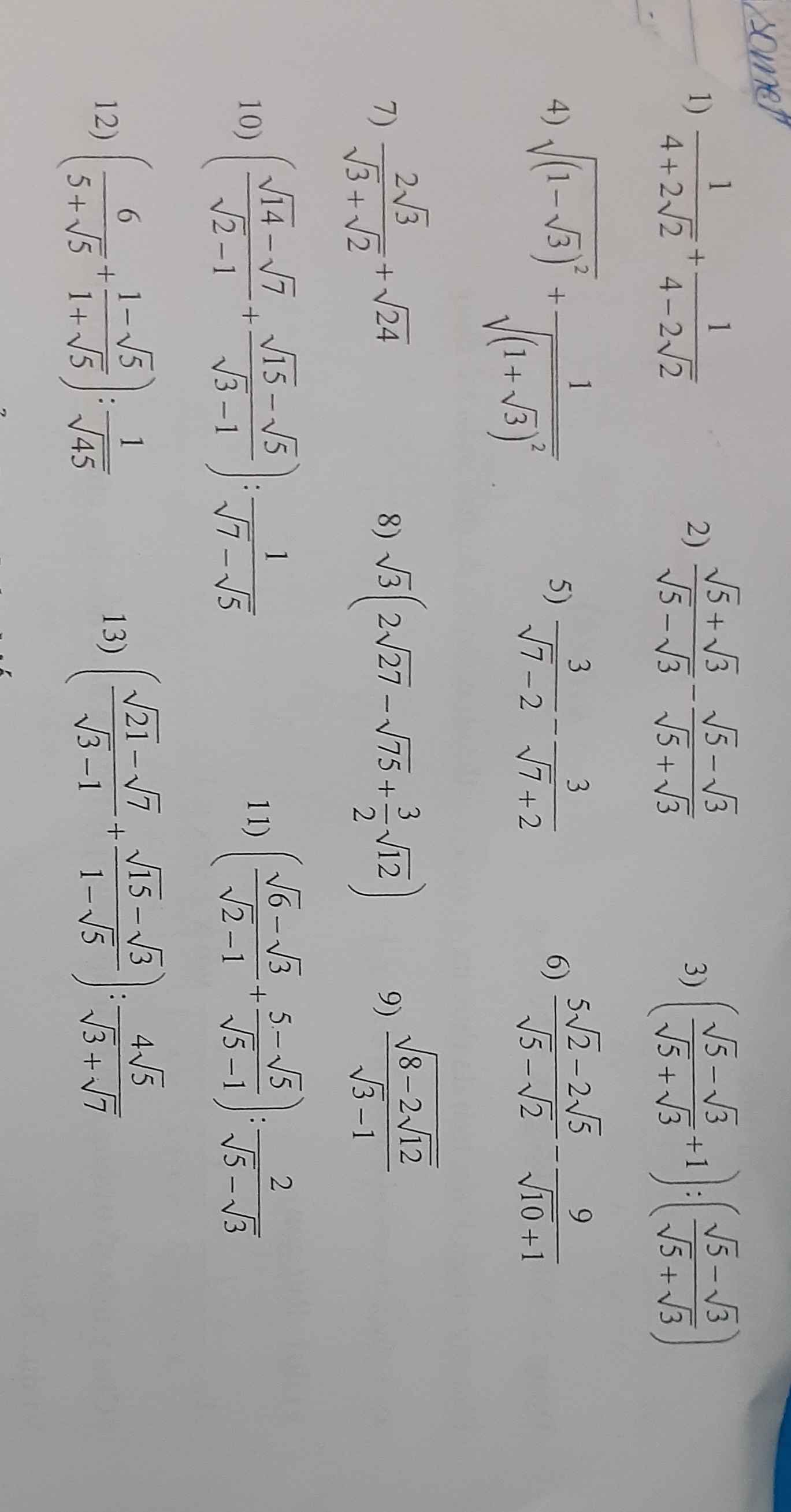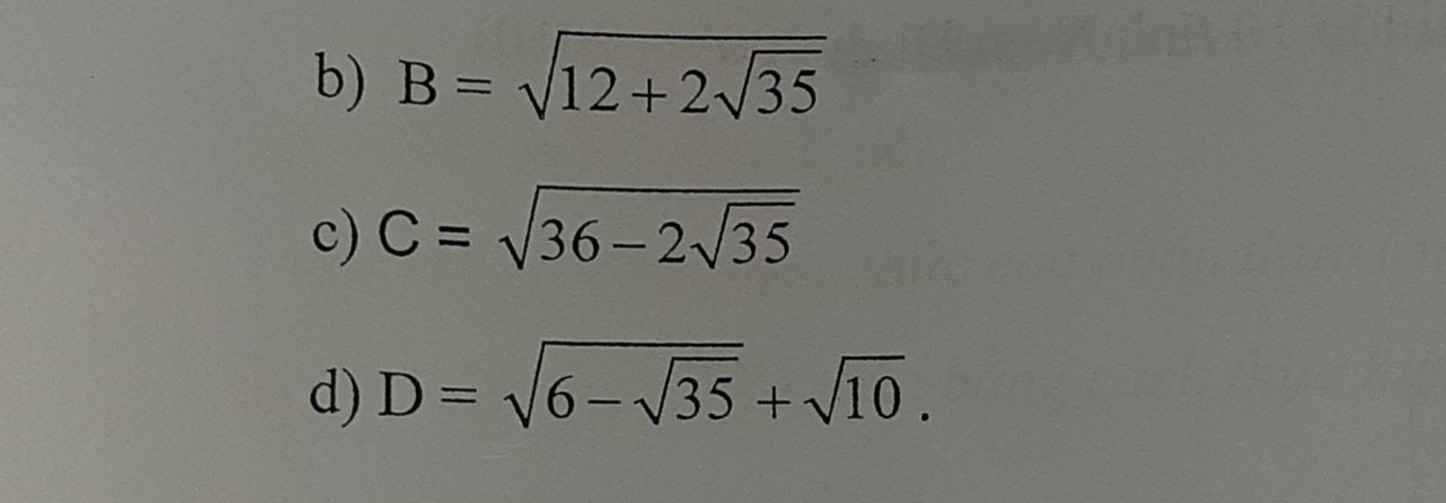
Hãy nhập câu hỏi của bạn vào đây, nếu là tài khoản VIP, bạn sẽ được ưu tiên trả lời.


câu 2 thì mk có pt nhưng mk ko bt giải
\(\left\{{}\begin{matrix}\dfrac{1}{x}-\dfrac{1}{y}=\dfrac{1}{10}\\x-y=15\end{matrix}\right.\)


b) \(B=\sqrt{12+2\sqrt{35}}=\sqrt{12+2.\sqrt{7}.\sqrt{5}}=\sqrt{\left(\sqrt{7}\right)^2+2.\sqrt{7}.\sqrt{5}+\left(\sqrt{5}\right)^2}=\sqrt{\left(\sqrt{7}+\sqrt{5}\right)^2}=\left|\sqrt{7}+\sqrt{5}\right|\)
Vì \(\sqrt{7}>\sqrt{5}\) nên \(\left|\sqrt{7}+\sqrt{5}\right|=\sqrt{7}+\sqrt{5}\)

ĐKXĐ: \(m\ne-1,m\ne\dfrac{3}{2}\)
a) 2 đường thẳng song song
\(\Leftrightarrow\left\{{}\begin{matrix}m+1=3-2m\\n\ne-2\end{matrix}\right.\)\(\Leftrightarrow\left\{{}\begin{matrix}m=\dfrac{2}{3}\left(tm\right)\\n\ne-2\end{matrix}\right.\)
b) 2 đường thẳng cắt nhau tại một điểm trên trục tung:
\(\Leftrightarrow\left\{{}\begin{matrix}m\ne-1;m\ne\dfrac{3}{2}\\m+1\ne3-2m\\n=-2\end{matrix}\right.\)\(\Leftrightarrow\left\{{}\begin{matrix}m\ne-1;m\ne\dfrac{3}{2};m\ne\dfrac{2}{3}\\n=-2\end{matrix}\right.\)


a) Thay m=3 vào hệ pt, ta được:
\(\left\{{}\begin{matrix}x+3y=3\\3x+4y=6\end{matrix}\right.\Leftrightarrow\left\{{}\begin{matrix}3x+9y=9\\3x+4y=6\end{matrix}\right.\)
\(\Leftrightarrow\left\{{}\begin{matrix}5y=3\\x+3y=3\end{matrix}\right.\Leftrightarrow\left\{{}\begin{matrix}y=\dfrac{3}{5}\\x=3-3y=3-3\cdot\dfrac{3}{5}=\dfrac{6}{5}\end{matrix}\right.\)
Vậy: Khi m=3 thì hệ phương trình có nghiệm duy nhất là \(\left(x,y\right)=\left(\dfrac{6}{5};\dfrac{3}{5}\right)\)


a) Thay m=3 vào hệ phương trình, ta được:
\(\left\{{}\begin{matrix}x+3y=3\\3x+4y=6\end{matrix}\right.\Leftrightarrow\left\{{}\begin{matrix}3x+9y=9\\3x+4y=6\end{matrix}\right.\)
\(\Leftrightarrow\left\{{}\begin{matrix}5y=3\\x+3y=3\end{matrix}\right.\Leftrightarrow\left\{{}\begin{matrix}y=\dfrac{3}{5}\\x=3-3\cdot\dfrac{3}{5}=\dfrac{15}{5}-\dfrac{9}{5}=\dfrac{6}{5}\end{matrix}\right.\)
Vậy: \(\left(x,y\right)=\left(\dfrac{6}{5};\dfrac{3}{5}\right)\)









